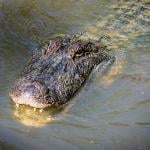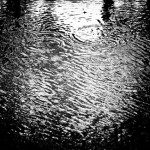First, some pictures:
At Badlands National Park, at sunrise:

and at sunset:

We had some more but these were my two favorites from our road trip with the two key destinations being Custer State Park and Badlands National Park, and yes, the buffalo is scratching his back on the sign.
I’m almost embarrassed to admit that it took as long as it did, for the kids to be almost all out of the house, for us — that is, just my husband and I — to take a road trip “out west,” and even then, the “out west” was relatively limited. Periodically I would map out long trips in a circle going from Chicago to Mount Rushmore, then to Yellowstone, down to Arches National Park and eventually the Grand Canyon, and back through Denver. But our road trips ended up being road trips through Europe, which is great, but the closest we’d come to a “big national park trip” was a smaller trip, when our oldest wasn’t even walking yet, when we flew to Cody and rented a car to spend a week in Yellowstone.
So this iteration was simpler, yet we discovered that even going as far as Mount Rushmore, there really was a lot to see, because Mount Rushmore wasn’t just isolated but adjacent to the Black Hills, Custer State Park, and Badlands National Park (plus the Minuteman Missle National Historic Site) was just an hour to the east.
Now, the Badlands which give Badlands National Park its name are viewed via a 29 mile scenic drive, with loads of overlooks for pulling over and a few (but surprisingly few) small hiking paths, and there’s another portion of the park which is labelled as “wilderness” with just a gravel road, so I really figured that, even though we had just watched a National Geographic show on the wildlife in the park, they would all be in the visitor-inaccessible areas, and we would just be enjoying the wacky landscape. But there were buffalo hanging out at the side of the road or even, once, a couple buffalo taking their time crossing the road, which I thought was really fantastic to watch.
But Custer State Park — which is to the south and west of Mount Rushmore (and I gotta admit, you can “do” Mount Rushmore itself pretty quickly) — is where the real buffalo-viewing is at, specifically at the Wildlife Loop, where there were actual herds of buffalo just hanging out. Honestly, we started on this scenic drive and were unimpressed, coming across some relatively tame burros and thinking it was as good as it was going to get, and then maybe midway through the drive, THERE THEY WERE!
Now, according to the National Geographic show, the buffalo at the Badlands live pretty much everyday buffalo lives, looking for grass to eat, male buffalo fighting to be at the top and mate with the females. But the Custer State Park had a visitor center specifically devoted to the buffalo which described a very careful management process, based on the herd size that the land would support, the rainfall patterns, etc., and if we’d come just a week later, we would have stumbled on the annual buffalo roundup, when the herd is culled and, in particular, only a few older males are allowed to stay in the herd. The center also described the rebuilding of a buffalo herd from small beginnings in 1914, starting with 36 animals from early efforts to preserve the animal in the face of extinction. (This isn’t from memory but a quick Wikipedia look-up.)
And in that visitor center, on a signboard, was an explanation of the two names, buffalo and bison. Here’s a similar statement at the National Parks page for Badlands:
There are many names for the American Bison. Scientifically, the plains bison subspecies found in Badlands National Park are of the genus Bison, of the species bison, and the subspecies bison. If you ask a wildlife biologist, these animals are called Bison bison bison!
Although these animals have “bison” three times in their scientific name, they are often called buffalo. The word buffalo is derived from the French “bœuf,” a name given to bison when French fur trappers working in the US in the early 1600s saw the animals. The word bœuf came from what the French knew as true buffalo, animals living in Africa and Asia. Although this name was a mix-up of two different animals, many people still know bison as buffalo today.
But – admittedly going from memory – the visitor center went a step further and said, either name is perfectly fine. After all, we are speakers of English, not Latin, and we ordinarily use ordinary English names, not scientific names, for animals!
But taking things a step further, the Custer center sign said, the American bison/buffalo is most closely related to the European bison, also called a wisent, so that’s why scientists use the name bison, even though the larger “family” includes other sorts of buffalo. You can look at a few pictures at this link to say, “yup, that’s what a buffalo looks like!”
And why, if there was a “European bison,” would the French trappers not have used this name? Because (here I’m referencing Wikipedia) even though at one point the European bison/wisent’s range once extended as far west as France, as long ago as 1513 their range was largely reduced to the Białowieża Forest, in far Eastern Poland, as well as though they continued to live in the wild there with protections until the early 20th century. Sadly, when Germany occupied this part of Poland during World War I, occupying troops shot nearly all the remaining wild bison, so that the only remaining bison were in zoos. Afterwards, at about the same time as American efforts to reintroduce buffalo to the wild, Poles and international supporters engaged in a similar effort, though the numbers are smaller, with a total of 2,269 at the end of 2019. Again referencing Wikipedia, there are far more bison in the United States, with population estimates of 400,000 – 500,000 in 2010, though only 20,500 are in 62 “conservation herds” (of which 15,000 are considered truly wild, “not primarily confined by fencing”), and the remainder are in commercial farmed herds. (Why aren’t there commercially-farmed bison in Europe? Maybe it’s just a matter of lacking the massive pasture land/prairie lands not suitable for cropland that we have in the United States.)
So I don’t really have a grand point here. But I really enjoyed seeing buffalo “in person” and it’s also pretty interesting to read this greater context, and I invite you to share your random buffalo-themed factoids or experiences.












